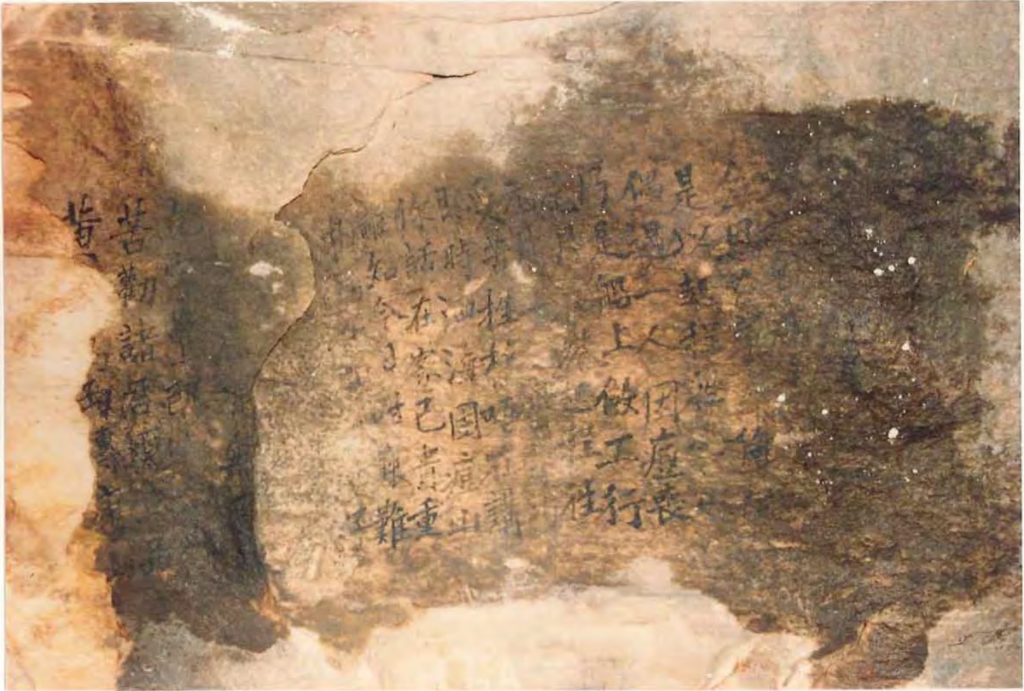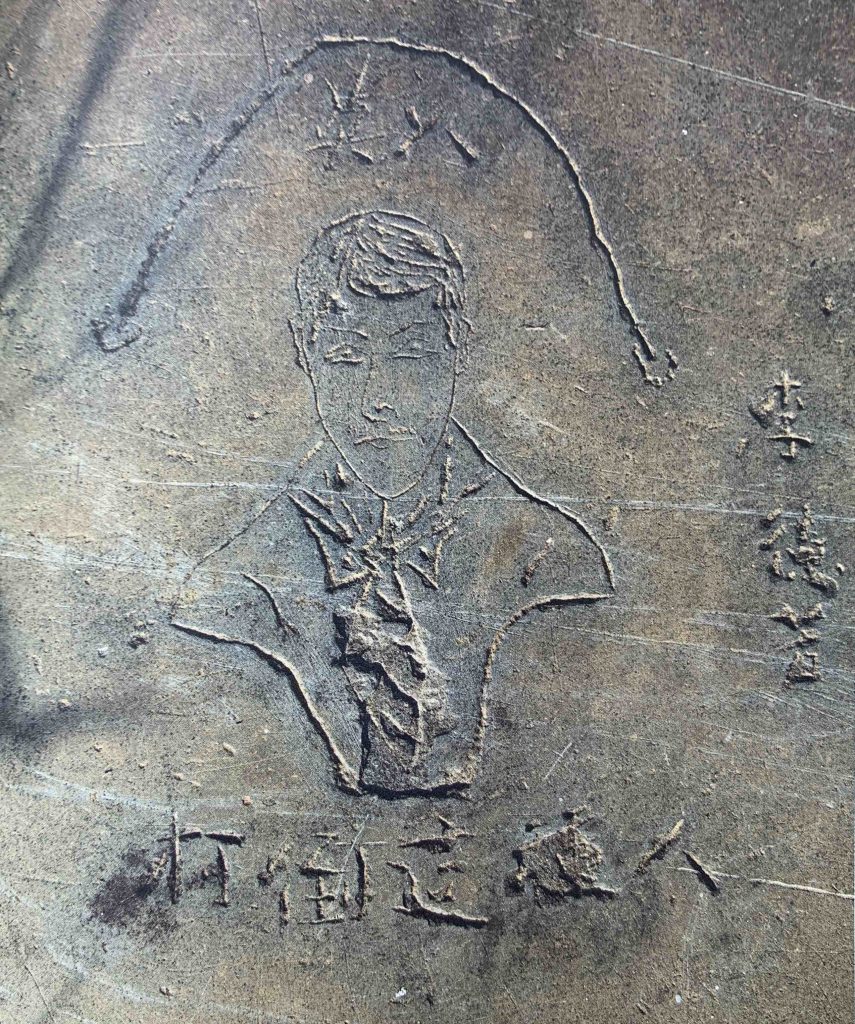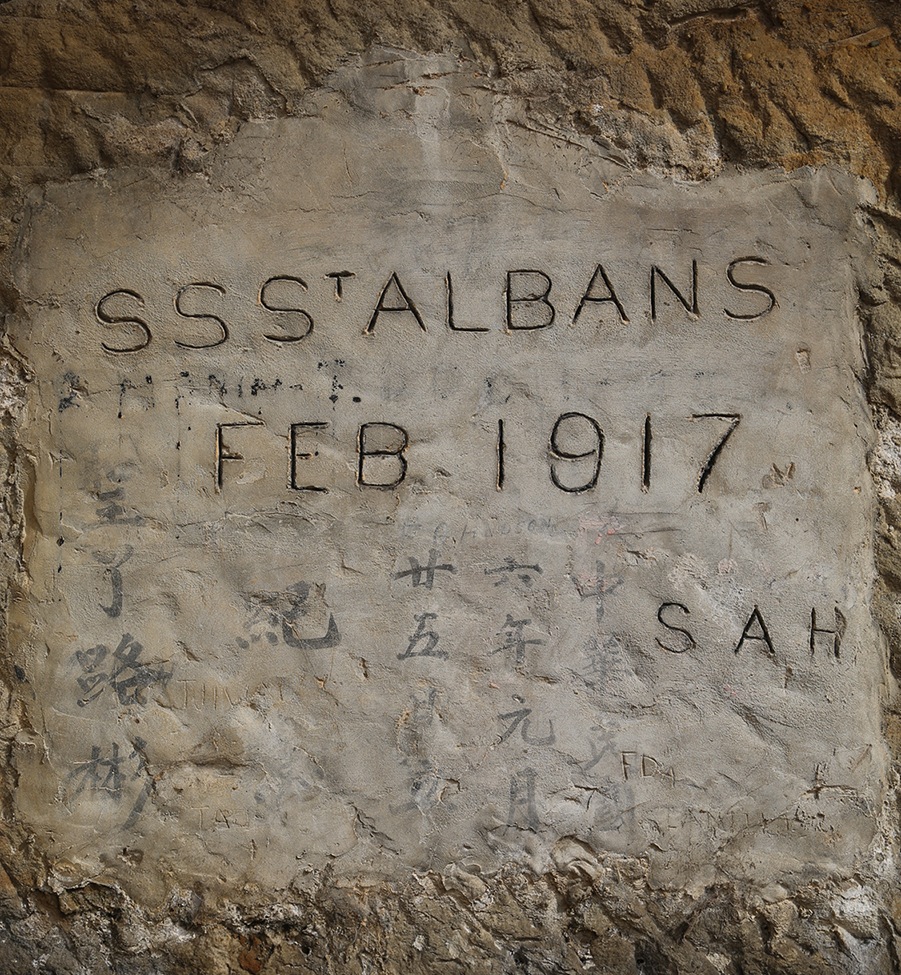Sydney’s North Head Quarantine Station operated from the 1830s until 1984. Over these years passengers and crew off ships thought to carry contagious diseases were forced to spend days, weeks and even months living there. Many of the passengers and crew were Chinese and they, along with others, often spent their time carving their thoughts and feelings into the sandstone. The result is a rare collection of poems and other writings that gives us a rare instance of Chinese voices in Chinese Australian history.
The carvings are mostly difficult to read now and vary from simply names and dates to emotional poems and the occasional denunciation of imperialism or Englishmen in general.

As soon as thinking of my younger brother without help.
I set off for gold mountain right away.
Occasionally a man died of smallpox.
He is a sailor on the ship.
Setting off and sailing to in the last month of the year.
By tenth of January next year, arrived at Sydney Harbour.
It is hard to say how much misfortune I have suffered.
I have been trapped and suffered from smallpox all these days.
Your advisable words are proved precious to me.
Nobody knows what trouble I am in.
I must not complain •••
Talking about it, I am surprised what I have done all these years.
I sincerely advise everyone should have his own decision.
The news that ten thousands Liang of gold buried in Australia spreads to China.
••••••

This description of the St Albans carving was supplied to the Chinese Australian Historical Society in November 2015 by archaeologist Dr Peter Hobbins when he conducted a tour of the Quarantine Station:

In some ways, a memento of the visit of the steamship St Albans in 1917 reveals much about the Chinese history of Sydney’s former Quarantine Station at North Head, near Manly. Created by layering concrete onto a sandstone cliff face, this inscription features messages in both English and Chinese. Latin characters were scored into the wet concrete to read simply “SS St Albans Feb 1917 SAH”. For historians working in Australian and British sources, this is enough to track down Samuel Alfred (‘Alf’) Hollingsworth, third mate aboard the steamer when it was quarantined for smallpox over 16–19 February 1917.
But the concrete is also giving up another secret. As lime wash weathers away after nearly a century of sea air, a more detailed message is emerging. Painted with a skilled hand, this Chinese panel has led to some confusion – particularly the somewhat cryptic column on the left. Speaking the characters aloud, however, reveals their intention: they sound out a close equivalent of ‘St Albans’. The entire message has been translated to state: “Erected in the sixth year of the Republic, first month, twenty-fifth day, to commemorate St Albans”.
Who crafted this careful calligraphy, and whether they were permitted to do so, is unknown. Certainly, the St Albans had a mixed British and Chinese crew, and spent decades sailing between Australian and Asian ports. The symmetrical layout which balances the English and Chinese messages may suggest that it was planned from the outset as a bilingual monument. Although the Chinese characters were later overpainted, one unintended benefit was that they have been better preserved as they reappear in the present.
Similarly, Chinese residents, travellers and crew caught up in quarantine have moved in and out of visibility at North Head since the 1850s. Across the landscape, they also left over 100 inscriptions carved or painted onto cliffs, boulders, buildings and drain covers, while others are memorialised in the nearby cemetery. Since 2013 a team of archaeologists and historians from the University of Sydney has been recording these inscriptions and seeking to tell some of their stories of travel, disease, internment, sadness and strength.
Stories from the Sandstone examines around 1600 engravings in many different languages that were carved into the rocks and walls around the Quarantine Station during its 150-year history.

